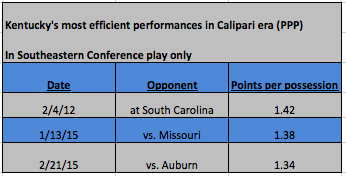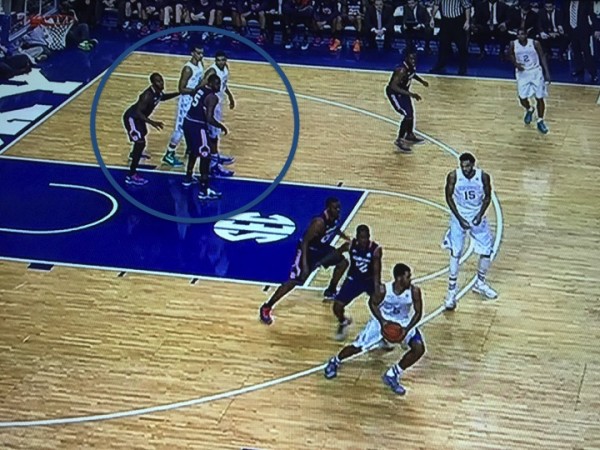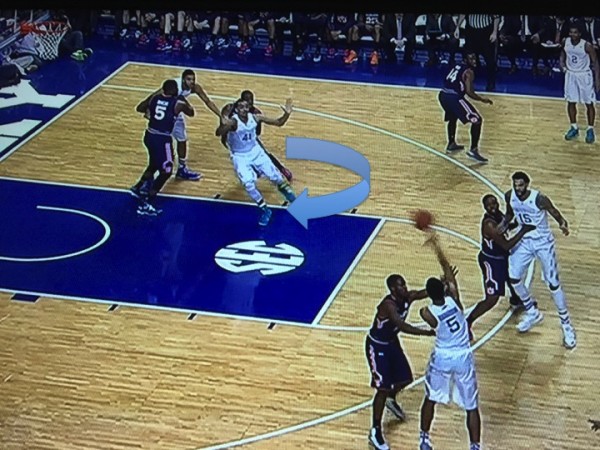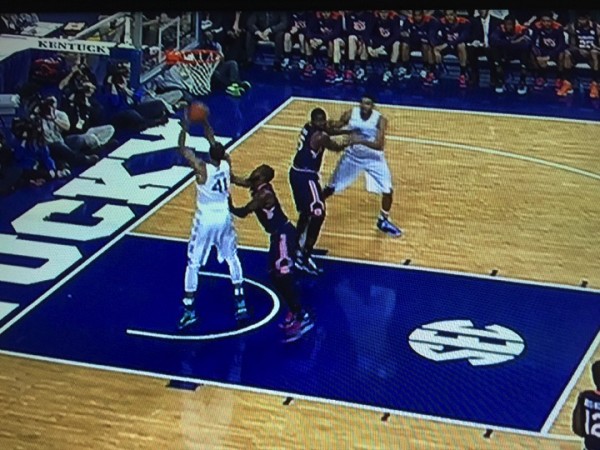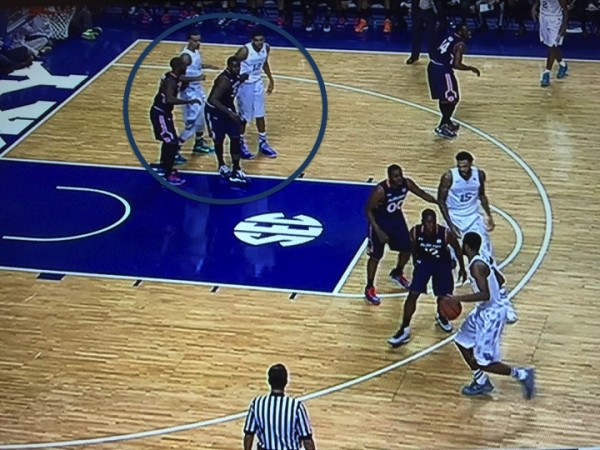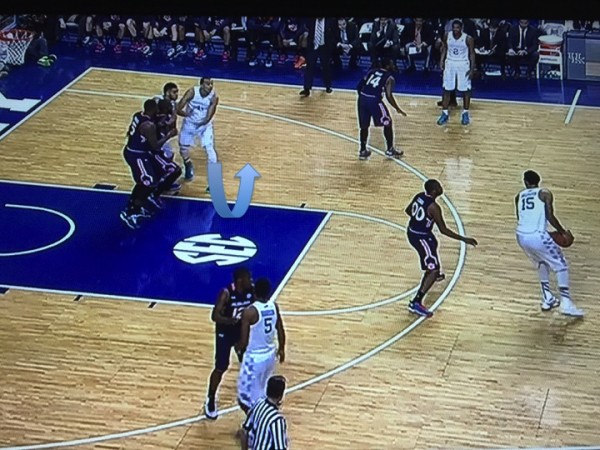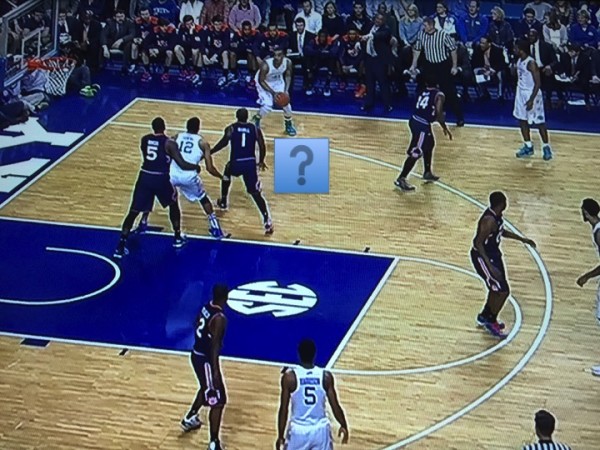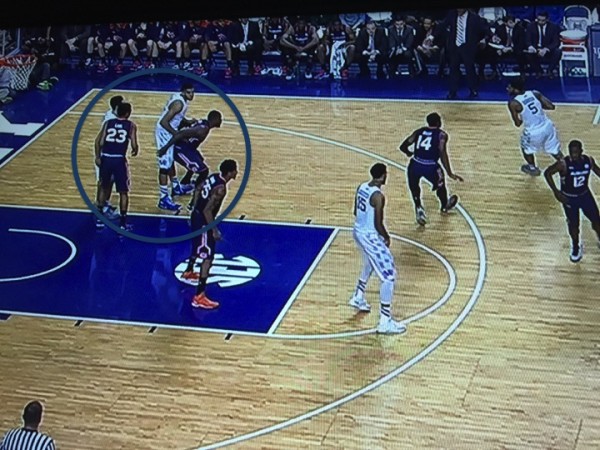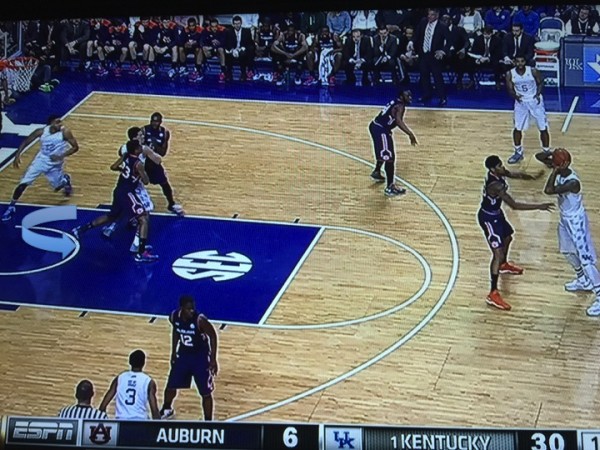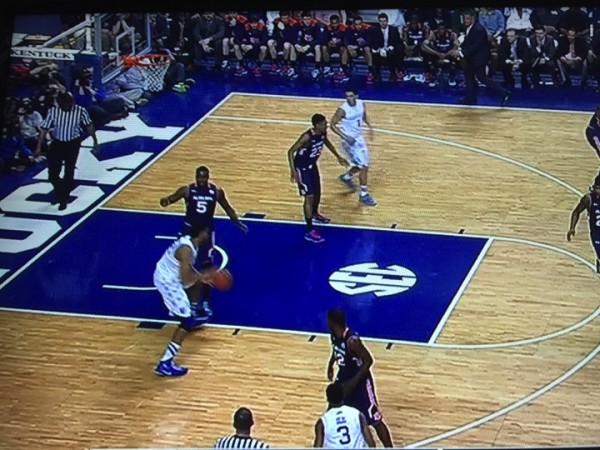Freeze Frame: Analyzing Kentucky’s Post Game
Posted by Brian Joyce on February 24th, 2015Teams known for their defensive efficiency might not normally hang 110 points in conference play, but that’s exactly what Kentucky did when it met Bruce Pearl’s Auburn team on Saturday evening. Ken Pomeroy lists the Wildcats as the eighth most-efficient offense in the nation (118.4 points per 100 possessions), but that end of the floor has not consistently been the Wildcats’ calling card this season. John Calipari’s offense does, however, seem to be impvoing at just the right time. Kentucky’s 1.34 points per possession performance over the weekend was the third-best in SEC play for the Wildcats during the Calipari era (2010-15).
The Wildcats were good at just about every aspect of their game against Auburn, but Kentucky dominated the low post, with its 62 points in the paint tied for the most of any SEC team this season. In this edition of Freeze Frame, we will examine Kentucky’s post play to see how the bigs use screens on the low block to find and hold good post position.
Let’s look in depth at one play that Calipari used in a variety of ways. Notice the formation on the low block. Kentucky’s Karl Anthony-Towns and Trey Lyles line up together as Andrew Harrison looks for space at the top of the key. Auburn’s Cinmeon Bowers bodies up with Towns, while the smaller guard K.T. Harrell defends Lyles.
Lyles is going to come over the top of Towns by using the big man as a screen. If Bowers then switches to Lyles, Towns has a major mismatch with the 6’4″ Harrell guarding him in the post. Auburn doesn’t switch, so Harrell is forced to chase Lyles across the paint.
With no switch, Harrell is a step behind and Harrison hits Lyles in stride. Lyles hits the open layup and draws the foul, and-one.
Kentucky runs the play again just one minute later. Look familiar?
Harrison moves the ball to Willie Cauley-Stein at the top of the key, and Lyles uses the screen from Towns again. Rather than curling into the lane this time, however, Lyles reads the defense and instead fades out to the three-point line.
Lyles gets the ball at the three-point line and forces Harrell into a tough decision. The Auburn defender can stay where he is and front the entry pass to Towns — allowing Lyles an open three — or he can challenge the three-point shot giving Towns the ball in a dangerous post position. Harrell chooses to challenge the shot by Lyles. Lyles recognizes the decision and feeds the ball down low to Towns, which causes Harrell to reverse course and double-team. Antoine Mason then slides over to defend Lyles, giving Aaron Harrison an open look at a three (which he missed).
Now, we look at the same formation a last time. This time, Devin Booker is in for Lyles and he lines up next to Towns.
Instead of staying with the same action, Calipari throws a little tweak into it. With Bowers fronting Towns, Booker slides between the defenders and screens Bowers as Towns reverses to the other block. There’s no switch again from Auburn as TJ Lang sticks with Booker.
Bowers is slow to get to Towns. By the time the big man gets the ball on the low block, it’s too late. A shimmy and a shake later, Towns spins and makes a right hand hook in the lane.
Look for Kentucky to use this play often down the stretch of SEC play. Calipari ran this play over and over again to give his big men an advantage in the paint, and the strategy is working as Kentucky has scored at least 1.10 points per possession in each of its last five games. Meanwhile, the Wildcats’ defense has only allowed an opponent to reach that mark once all season (vs. Ole Miss on January 6). Kentucky is playing its most efficient basketball on both ends of the court at just the right time. The Wildcats may be 27-0 from a record perspective, but more importantly, they might also be getting better with March just around the corner.





























